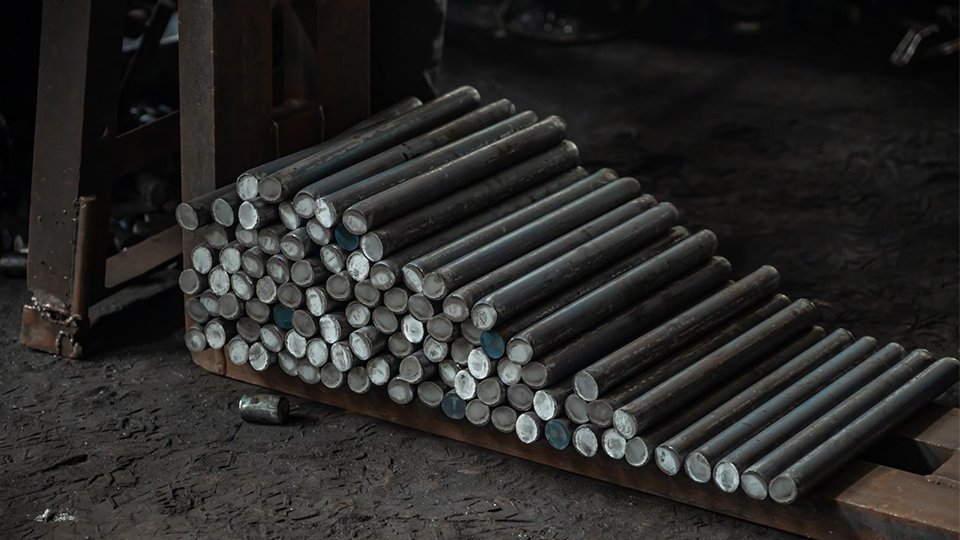Anchor Chain Raw Materials Chinese Standards
According to the National Standard of the People’s Republic of China GB/T18669-2012, the material used in this type of products has been delete CM370 of Grade M1, the factories usually use Q235 round steel for Grade M1 anchor chain, the material of Grade M2 is CM490, and the material of Grade M3 is CM690.
The brand of ship anchor chain round steel is composed of "ship", "anchor" by Chinese pinyin initial letter" C ", "M" and the minimum tensile strength.
The chemical composition of each material is specified in the following form:
1. Material Q235, Standard:GB/T700-2006
GB/T 700-2006 is a Chinese national standard that specifically regulates the production and inspection of carbon structural steel. Q235, as the core grade in this standard, is a common carbon structural steel that is widely used in engineering structures such as welding, riveting, and bolting, such as building steel frames, bridges, bolts, and low-demand parts in machinery manufacturing. Its economy and comprehensive performance make it a basic material in the industrial field.
Brand | Chemical Composition %(No more than) | ||||
C | Si | Mn | P | S | |
Q235A | 0.22 | 0.35 | 1.40 | 0.045 | 0.050 |
Q235B | 0.20 | 0.35 | 1.40 | 0.045 | 0.045 |
Q235C | 0.17 | 0.35 | 1.40 | 0.040 | 0.040 |
Q235D | 0.17 | 0.35 | 1.40 | 0.035 | 0.035 |

2. Material CM460, CM690, Standard: GB/T18669-2012
1) Optimized chemical composition: Strengthen basic performance
Brand | Chemical Composition %(No more than) | ||||||||
C | Si | Mn | P | S | Als | V | Nb | Ti | |
CM490 | 0.17-0.24 | 0.15-0.55 | 1.10-1.60 | ≤0.035 | ≤0.030 | ≥0.015 | —— | —— | —— |
CM690 | 0.27-0.33 | 0.15-0.55 | 1.30-1.90 | ≤0.035 | ≤0.030 | ≥0.015
| ≤0.10 | ≤0.05 | ≤0.02 |
2) Excellent mechanical properties: Adapt to extreme working conditions
CM460 :Tensile strength: ≥785 MPa, meeting the strength requirements of general anchor chains.
Yield strength: ≥590 MPa, ensuring that the anchor chain is not prone to plastic deformation when subjected to tension.
Elongation: ≥10%, ensuring that the material has sufficient plasticity reserve when subjected to force to avoid brittle fracture.
Impact absorption energy: ≥47 J (Aku2/J), excellent low-temperature toughness, adapting to changes in marine environmental temperature.
CM690 :Tensile strength: ≥690 MPa (grade 3 anchor chain steel), even up to 890 MPa (grade 4 anchor chain steel), meeting the high-strength requirements of deep sea and large ships.
Yield strength: significantly higher than CM460, suitable for manufacturing anchor chains that withstand huge tension.
Low-temperature toughness: Through titanium microalloying and controlled rolling and controlled cooling processes, the -20℃ impact absorption energy meets the standard, ensuring safe use in cold waters.
3) Process performance adaptation: improve manufacturing efficiency
Weldability
The chemical composition design of CM460 and CM690 (such as low P and S content) reduces the risk of welding cracks and supports common anchor chain welding processes such as flash welding and submerged arc welding.
CM690 further optimizes the organization of the welding heat affected zone through titanium microalloying and improves the weld strength.
Cold formability
CM460 has a moderate carbon content and is easy to bend, stamp and other cold processing processes, suitable for manufacturing complex chain link structures.
Although CM690 has higher strength, it still maintains good cold formability through controlled rolling and controlled cooling processes to meet the needs of anchor chain manufacturing.
Heat treatment response
Both materials have good hardenability, and the performance can be adjusted through heat treatment processes such as normalizing, quenching + tempering, etc. to meet the manufacturing requirements of anchor chains of different specifications.
4) Strictness of standards: ensuring quality stability
GB/T 18669-2012 has comprehensively upgraded the inspection requirements for anchor chain round steel, which directly improved the quality reliability of CM460 and CM690:
Chemical composition analysis: Spark source atomic emission spectrometry (GB/T 4336) is used to ensure that the composition meets the standard.
Mechanical property test: Including tensile test (GB/T 228) and impact test (GB/T 229) to verify the strength and toughness of the material.
Surface quality inspection: cracks, scars, inclusions and other defects are prohibited to reduce the risk of breakage during the use of anchor chains.
Macrostructure rating: Acid-immersed macrostructure test pieces must meet the requirements of general looseness, central looseness, and ingot-shaped segregation ≤3 levels to avoid internal defects affecting performance.
5) Targeted application scenarios: meeting diverse needs
CM460 : It is suitable for the manufacture of anchor chains for small and medium-sized ships and offshore operations, with high cost-effectiveness and performance that meets conventional needs.
CM690 : It is widely used in high-strength anchor chains such as large oil tankers and deep-sea drilling platforms. Its titanium micro-alloyed version (such as CM690E) is more suitable for extreme environments such as the Arctic route or ultra-deep waters.
Of course, there are higher-level raw materials for mooring chain anchor chains, namely R3, R4, R5, R6 and other levels. These levels are divided and used according to the strength, performance and application scenarios of the mooring chain. There will be a special introduction in the future.


